อ่างน้ำแข็งและการพุ่งเย็นเป็นรูปแบบของการบำบัดด้วยน้ำเย็นที่ใช้มานานหลายศตวรรษ แต่ได้เห็นการฟื้นตัวในช่วงไม่กี่ปีที่ผ่านมาเนื่องจากประโยชน์ต่อสุขภาพมากมาย พวกเขาลดการอักเสบโดยการ จำกัด หลอดเลือดเพิ่มความเร็วในการฟื้นตัวหลังจากออกกำลังกายอย่างรุนแรงปรับปรุงการไหลเวียนผ่านการสลับการสัมผัสร้อนและเย็นและปล่อยเอนโดฟินเพื่อประโยชน์ต่อสุขภาพจิต ช่วงอุณหภูมิในอุดมคติโดยทั่วไป 50 ° F ถึง 59 ° F (10 ° C ถึง 15 ° C) มีความสำคัญอย่างยิ่งต่อผลกระทบเหล่านี้โดยมีอุณหภูมิต่ำกว่า 32 ° F แอบแฝงเสี่ยงและสูงกว่า 60 ° F ผลกระทบการรักษา การบำรุงรักษาช่วงนี้ด้วยน้ำแข็งด้วยตนเองนั้นใช้แรงงานมากและไม่สอดคล้องกันซึ่งนำไปสู่การยอมรับของเครื่องทำน้ำแข็ง อุปกรณ์เหล่านี้ให้การควบคุมอุณหภูมิที่แม่นยำเพิ่มประสบการณ์ผู้ใช้และสร้างความมั่นใจในความปลอดภัยโดยเฉพาะอย่างยิ่งในการตั้งค่าที่มีการดำเนินการหลายครั้งทุกวัน
เครื่องทำความเย็นในอ่างน้ำแข็งได้รับการออกแบบมาเพื่อรักษาน้ำให้อยู่ในอุณหภูมิที่เหมาะสมสำหรับการพุ่งเย็นด้วยตัวเลือกที่ระบายความร้อนด้วยอากาศมักจะเป็นที่ต้องการสำหรับการใช้งานบ้านและการใช้งานเชิงพาณิชย์ขนาดเล็กเนื่องจากความเรียบง่าย พวกเขาให้ความเย็นแบบประหยัดพลังงานโดยบางรุ่นทำงานอย่างเงียบ ๆ เพื่อการฟื้นฟูอย่างสงบและรวมถึงคุณสมบัติเช่นการกรองเพื่อคุณภาพน้ำ ตัวอย่างเช่นชิลเลอร์แบบบูรณาการในอ่างน้ำเย็นแบบ all-in-one ให้ความสะดวกสบายในขณะที่หน่วยพกพาตอบสนองต่อการตั้งค่าที่ยืดหยุ่นโดยเน้นความเก่งกาจของพวกเขา
ตู้แช่น้ำแข็งระบายความร้อนด้วยอากาศ 4 ตัน
สร้างขึ้นอย่างเชี่ยวชาญเพื่อรองรับอ่างน้ำแข็งหลายอ่าง เครื่องทำความเย็นระบายความร้อนด้วยอากาศขนาด 4 ตันนี้สามารถรองรับอ่างได้ 3 ถึง 5 อ่าง โดยแต่ละอ่างบรรจุน้ำได้มากถึง 200 ลิตร สัมผัสประสบการณ์ความสะดวกสบายและประสิทธิภาพที่ไม่มีใครเทียบได้ เหมาะสำหรับการตั้งค่าส่วนบุคคลและเชิงพาณิชย์
เครื่องทำน้ำแข็งทำน้ำแข็งทำงานอย่างไร
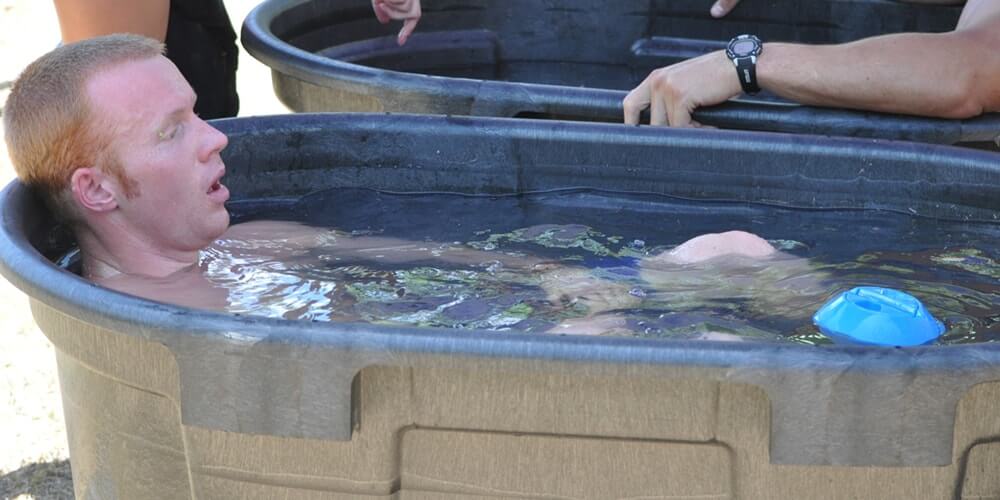
น้ำแข็งอาบน้ำเย็นทำงานในวงจรการบีบอัดไอคล้ายกับเครื่องปรับอากาศหรือตู้เย็นเพื่อให้มั่นใจว่าการระบายความร้อนอย่างต่อเนื่อง กระบวนการเกี่ยวข้องกับ:
- การบีบอัด: วัฏจักรเริ่มต้นด้วยคอมเพรสเซอร์ที่ทำให้เกิดแรงดันก๊าซสารทำความเย็นเพิ่มอุณหภูมิ ขั้นตอนนี้ใช้พลังงานจากมอเตอร์ไฟฟ้าซึ่งมักจะมีตัวเลือกความเร็วแปรปรวนสำหรับประสิทธิภาพการใช้พลังงานทำงานอย่างเงียบ ๆ เพื่อการฟื้นฟูอย่างสงบ
- การควบแน่น: ก๊าซสารทำความเย็นร้อนจะไหลลงสู่ขดลวดคอนเดนเซอร์ซึ่งจะปล่อยความร้อนไปยังอากาศโดยรอบ (ในรุ่นระบายความร้อนด้วยอากาศ) หรือน้ำ (ในรุ่นระบายความร้อนด้วยน้ำ) เปลี่ยนเป็นของเหลวแรงดันสูง เครื่องทำความเย็นที่ระบายความร้อนด้วยอากาศที่ต้องการสำหรับอ่างน้ำแข็งเนื่องจากโหลดความเย็นที่ลดลงใช้พัดลมเพื่อกระจายความร้อน
- การขยายตัว: สารทำความเย็นของเหลวผ่านวาล์วขยายตัวซึ่งจะช่วยลดความดันและอุณหภูมิอย่างมีนัยสำคัญซึ่งมักจะต่ำกว่า 32 ° F ขึ้นอยู่กับความสามารถของเครื่องทำความเย็น ขั้นตอนนี้มีความสำคัญอย่างยิ่งต่อการบรรลุอุณหภูมิเย็นที่จำเป็นสำหรับการอาบน้ำน้ำแข็งโดยบางรุ่นถึง 37 ° F สำหรับการบำบัดที่เข้มข้น
- การระเหย: สารทำความเย็นเย็นเข้าสู่ขดลวดระเหยจมอยู่ใต้น้ำในน้ำน้ำแข็ง ในขณะที่มันดูดซับความร้อนจากน้ำมันจะระเหยกลับเข้าไปในก๊าซทำความเย็นน้ำที่อุณหภูมิที่ต้องการโดยทั่วไปจะอุณหภูมิ 50 ° F ถึง 59 ° F จากนั้นกลับไปที่คอมเพรสเซอร์เพื่อทำซ้ำรอบ การวนรอบอย่างต่อเนื่องนี้ช่วยให้มั่นใจได้ว่าน้ำยังคงเย็นโดยมีเครื่องทำความเย็นบางตัวรักษาอุณหภูมิต่ำถึง 32 ° F สำหรับการบำบัดด้วยความเย็นอย่างรุนแรง
ตัวอย่างเช่นเครื่องทำความเย็นที่ระบายความร้อนด้วยอากาศ 0.5 ตันอาจทำให้อ่างน้ำแข็งบ้าน 100 แกลลอนเย็นลงถึง 50 ° F ในขณะที่หน่วย 4 ตันสามารถจัดการอ่างอาบน้ำเชิงพาณิชย์ได้หลายห้องซึ่งมีความยาวสูงสุด 200 ลิตร
ประเภทของเครื่องทำความเย็นน้ำแข็ง
มีสองประเภทหลักของ Chillers ที่ใช้สำหรับอ่างน้ำแข็งแต่ละชนิดมีข้อดีของตัวเอง:
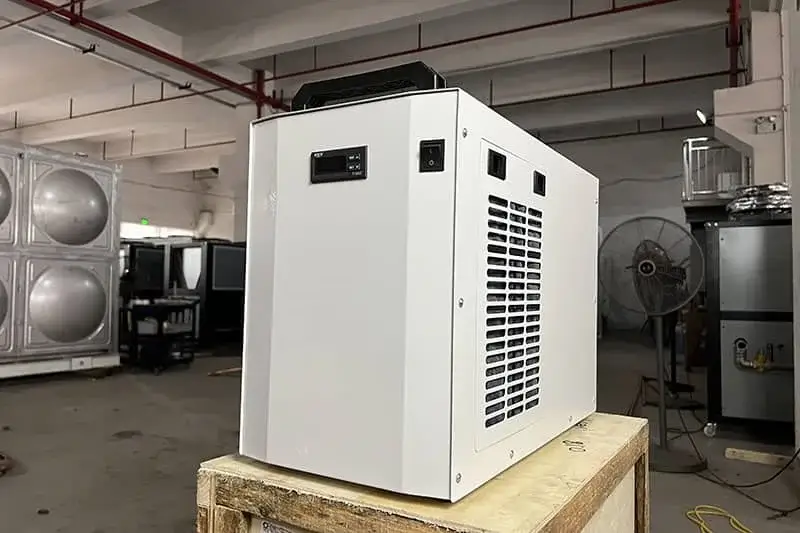
- ชิลเลอร์ระบายความร้อนด้วยอากาศ: การใช้อากาศโดยรอบเหล่านี้เพื่อกระจายความร้อนออกจากคอนเดนเซอร์ทำให้ติดตั้งและบำรุงรักษาได้ง่ายขึ้น พวกเขาเหมาะสำหรับการตั้งค่าเชิงพาณิชย์ที่บ้านและขนาดเล็กส่วนใหญ่โดยทั่วไปแล้วโหลดการระบายความร้อนที่ต่ำกว่ามักจะไม่ต้องใช้โครงสร้างพื้นฐานน้ำ พวกเขาอาจมีประสิทธิภาพน้อยกว่าในสภาพอากาศร้อนมากซึ่งอุณหภูมิอากาศรอบข้างเกิน 90 ° F แต่โดยทั่วไปจะเป็นที่ต้องการเพื่อความสะดวกในการใช้งาน ตัวอย่างรวมถึงรุ่นพกพาที่เหมาะสำหรับการอาบน้ำเดี่ยวสูงสุด 500 ลิตรเหมาะสำหรับใช้ในบ้านและโรงยิมขนาดเล็ก
- ชิลเลอร์ระบายความร้อนด้วยน้ำ: การใช้น้ำเหล่านี้เป็นสื่อความเย็นสำหรับคอนเดนเซอร์ซึ่งให้ประสิทธิภาพสูงขึ้นในสภาพแวดล้อมที่มีความร้อนสูง อย่างไรก็ตามพวกเขาต้องการแหล่งน้ำแยกต่างหากและการบำรุงรักษาเพิ่มเติมเช่นการบำบัดน้ำเพื่อป้องกันการปรับขนาด พวกเขามีการกล่าวถึงน้อยกว่าในบริบทของอ่างน้ำแข็งโดยมีตัวเลือกระบายความร้อนด้วยอากาศที่มีอิทธิพลเนื่องจากความเรียบง่าย
สำหรับผู้ใช้ส่วนใหญ่ Chillers ระบายความร้อนด้วยอากาศเป็นทางเลือกที่จะไปพร้อมกับแบบพกพาที่นำเสนอโซลูชั่นแบบบูรณาการสำหรับการใช้งานบ้านซึ่งรวมถึงเครื่องทำความเย็นสำหรับอุณหภูมิลดลงถึง 37 ° F และหน่วยขนาดใหญ่สำหรับสิ่งอำนวยความสะดวกเชิงพาณิชย์ที่รองรับหลายห้องอาบน้ำ
ประโยชน์ของการใช้น้ำแข็งอาบน้ำเย็น
การใช้งานเครื่องทำความเย็นน้ำแข็งมีข้อดีหลายประการสนับสนุนโดยประสบการณ์ผู้ใช้และบทวิจารณ์ผลิตภัณฑ์:
- ความสะดวก: ไม่จำเป็นต้องเพิ่มน้ำแข็งบ่อยครั้งช่วยประหยัดเวลาและความพยายามโดยผู้ใช้รายงานการลดลงอย่างมีนัยสำคัญในการใช้แรงงาน ตัวอย่างเช่นผู้ใช้อาจใช้เวลาน้อยกว่าหนึ่งชั่วโมงต่อวันในการจัดการเครื่องทำความเย็นในฤดูร้อนเมื่อเทียบกับการเติมน้ำแข็งอย่างต่อเนื่องสำหรับถังสต็อกโดยเฉพาะในสภาพอากาศร้อนที่น้ำแข็งละลายอย่างรวดเร็ว นี่เป็นสิ่งสำคัญอย่างยิ่งสำหรับการตั้งค่าเชิงพาณิชย์ซึ่งเวลาพนักงานมีค่า
- ความสม่ำเสมอ: ชิลเลอร์รักษาอุณหภูมิที่แม่นยำเพื่อให้มั่นใจว่าแต่ละเซสชั่นมีประสิทธิภาพและปลอดภัยโดยบางรุ่นทำงานได้มากถึง 30% และรักษา 37 ° F ซึ่งสำคัญสำหรับผลประโยชน์การรักษาเช่นการลดการอักเสบและการกู้คืน ความสอดคล้องนี้มีความสำคัญสำหรับผู้ใช้ที่ต้องการการรักษาที่เชื่อถือได้ลดความเสี่ยงของความผันผวนของอุณหภูมิที่สามารถลดประสิทธิภาพได้
- ประสิทธิภาพการใช้พลังงาน: ชิลเลอร์ที่ทันสมัยมีคอมเพรสเซอร์ความเร็วตัวแปรประหยัดไฟฟ้าในขณะที่ทำให้อาบน้ำเย็น 24/7 โดยเฉพาะอย่างยิ่งสำหรับผู้ใช้บ่อย ตัวอย่างเช่นบางรุ่นทำงานอย่างเงียบ ๆ ลดต้นทุนการดำเนินงานด้วยค่าไฟฟ้าต่ำถึง $ 1.50 ต่อวันแม้จะเย็นลงถึง 38 ° F ในช่วงกลางทศวรรษที่ 90 อุณหภูมิอากาศแสดงให้เห็นถึงความคุ้มค่าเมื่อเวลาผ่านไป
- การประหยัดพื้นที่: ชิลเลอร์หลายคนมีขนาดกะทัดรัดและพกพาติดตั้งภายใต้โต๊ะทำงานหรือในพื้นที่ขนาดเล็กเหมาะสำหรับการใช้บ้าน รุ่นพกพาเหมาะสำหรับการใช้งานทั้งในร่มและกลางแจ้งให้ความยืดหยุ่นสำหรับผู้ใช้ที่มีพื้นที่ จำกัด เพิ่มการเข้าถึงสำหรับห้องพักการกู้คืนส่วนบุคคล
- การประหยัดต้นทุนระยะยาว: ในขณะที่ต้นทุนเริ่มต้นอาจสูงขึ้น (เช่นตั้งแต่ไม่กี่ร้อยถึงหลายพันดอลลาร์ขึ้นอยู่กับขนาดและคุณสมบัติ) ชิลเลอร์ประหยัดเงินเมื่อเวลาผ่านไปโดยการลดการบริโภคน้ำแข็งและแรงงาน ผู้ใช้รายงานการออมหลายร้อยดอลลาร์ต่อปีโดยเฉพาะอย่างยิ่งในสภาพอากาศร้อนด้วยการลงทุนที่จ่ายผ่านผ่านต้นทุนการดำเนินงานที่ลดลงและเพิ่มความสะดวกสบายโดยเฉพาะอย่างยิ่งสำหรับผู้ใช้บ่อยหรือสถานที่เชิงพาณิชย์
การเลือกเครื่องทำความเย็นน้ำแข็งที่เหมาะสม
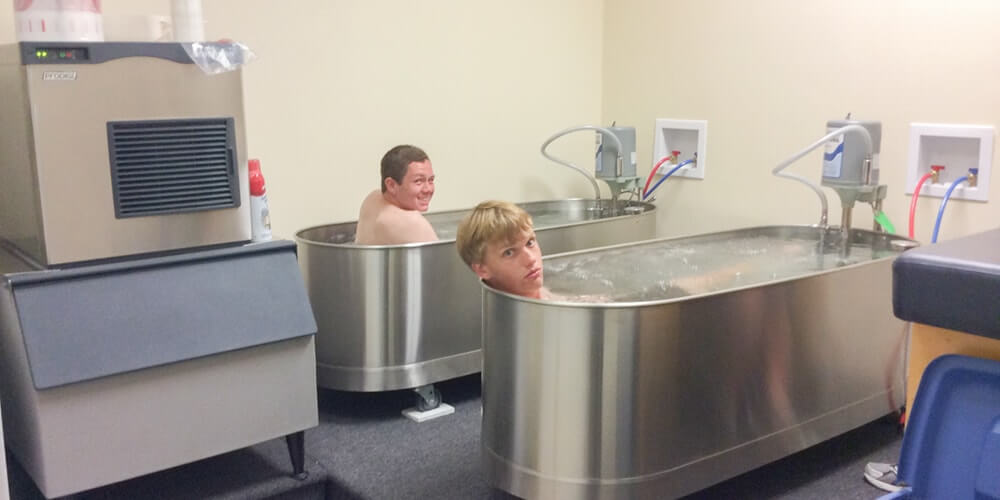
การเลือกเครื่องทำความเย็นอ่างน้ำแข็งเกี่ยวข้องกับปัจจัยหลายประการเพื่อให้แน่ใจว่าตรงกับความต้องการของคุณ:
- ความจุความเย็น: ตรวจสอบให้แน่ใจว่าเครื่องทำความเย็นสามารถจัดการกับปริมาณน้ำแข็งอ่างน้ำแข็งของคุณ ตัวอย่างเช่นเครื่องทำความเย็น 0.5 ตันอาจเพียงพอสำหรับการตั้งค่าบ้านขนาดเล็ก (สูงสุด 100 แกลลอน) ในขณะที่จำเป็นต้องใช้หน่วย 4 ตันสำหรับสิ่งอำนวยความสะดวกเชิงพาณิชย์ที่มีอ่างอาบน้ำหลายห้อง ใช้เครื่องคิดเลขขนาดชิลเลอร์เพื่อกำหนดความต้องการตามปริมาณน้ำและการลดลงของอุณหภูมิที่ต้องการเพิ่มอัตรากำไรขั้นต้นความปลอดภัย 20-25% สำหรับการเพิ่มความร้อน คำนวณโดยใช้สูตร: ความสามารถในการระบายความร้อน (ใน BTU / H) = ปริมาตรน้ำ (ในแกลลอน) × 8.33 ×อุณหภูมิที่ต้องการลดลง (ใน° F) / เวลา (เป็นชั่วโมง) ตัวอย่างเช่นการระบายความร้อนอ่าง 100 แกลลอนจาก 70 ° F ถึง 50 ° F ใน 2 ชั่วโมงต้องใช้เวลาประมาณ 0.7 ตัน แต่เลือกชิลเลอร์ 1 ตันเพื่อความปลอดภัย
- ช่วงอุณหภูมิ: มองหาเครื่องทำความเย็นที่สามารถเข้าถึงและรักษาช่วงที่ต้องการโดยทั่วไป 32 ° F ถึง 59 ° F โดยบางรุ่นที่ให้การควบคุมที่แม่นยำภายใน± 1 ° F สำหรับการรักษาที่เข้มข้น
- ประสิทธิภาพการใช้พลังงาน: ชิลเลอร์กับคอมเพรสเซอร์ความเร็วแปรปรวนช่วยประหยัดไฟฟ้าทำงานอย่างเงียบ ๆ และมีประสิทธิภาพโดยเฉพาะอย่างยิ่งสำหรับการใช้งาน 24/7 ลดต้นทุนการดำเนินงาน มองหาค่า COP สูง (ค่าสัมประสิทธิ์ประสิทธิภาพ) โดยบางรุ่นได้รับการประหยัดพลังงานสูงถึง 30% เมื่อเทียบกับหน่วยมาตรฐานโดยเฉพาะในสภาพอากาศร้อน
- ระดับเสียงรบกวน: สำหรับการใช้งานบ้านให้เลือกเครื่องทำความเย็นที่มีสัญญาณรบกวนต่ำเช่นรุ่นที่ทำงานได้มากถึง 30% ที่เงียบกว่า 30% เพื่อให้มั่นใจว่าการฟื้นตัวอย่างสงบสุขโดยไม่มีการรบกวนเหมาะสำหรับการตั้งค่าที่อยู่อาศัย
- การกรองและสุขาภิบาล: ชิลเลอร์บางตัวรวมถึงระบบการกรองในตัวที่มีการสุขาภิบาลโอโซนเพื่อให้น้ำสะอาดลดความต้องการการเปลี่ยนแปลงบ่อยครั้ง ตรวจสอบตัวกรองอย่างสม่ำเสมอแทนที่พวกเขาทุกสองสามเดือนเพื่อรักษาคุณภาพน้ำและป้องกันการเจริญเติบโตของแบคทีเรียเพิ่มความปลอดภัยของผู้ใช้
- การพกพาได้: สำหรับความยืดหยุ่นให้เลือกรุ่นพกพาที่เหมาะสำหรับการใช้งานทั้งในร่มและกลางแจ้งให้เหมาะสมภายใต้โต๊ะทำงานหรือในพื้นที่ขนาดเล็กให้ความสะดวกสำหรับผู้ใช้ที่มีห้องพัก จำกัด โดยเฉพาะสำหรับห้องพักฟื้นที่บ้าน
ตัวเลือกยอดนิยมรวมถึงหน่วยระบายความร้อนด้วยอากาศขนาดกะทัดรัดสำหรับการใช้งานบ้านโดยมีความจุตั้งแต่ 0.5 ถึง 1 ตันและโมเดลอุตสาหกรรมขนาดใหญ่สำหรับโรงงานเชิงพาณิชย์สูงสุด 5 ตันเพื่อให้มั่นใจได้ว่าจะปรับขนาดได้สำหรับความต้องการที่แตกต่างกัน เมื่อช็อปปิ้งให้มองหาผู้ผลิตที่มีชื่อเสียงที่เสนอการรับประกันและการสนับสนุนลูกค้าและอ่านบทวิจารณ์เพื่อวัดความน่าเชื่อถือและประสิทธิภาพ
การติดตั้งและการตั้งค่า
การติดตั้งเครื่องทำความเย็นอ่างน้ำแข็งมักจะเกี่ยวข้องกับ:
- วางเครื่องทำความเย็นใกล้อ่างน้ำแข็งเพื่อให้มั่นใจว่ามีพื้นที่เพียงพอสำหรับการระบายอากาศหากระบายความร้อนด้วยอากาศด้วยระยะห่าง 12-18 นิ้วเพื่อป้องกันการสะสมความร้อน
- การเชื่อมต่อท่อทางเข้าและทางออกจากเครื่องทำความเย็นกับอ่างเพื่อให้มั่นใจว่าอุปกรณ์ที่ปลอดภัยและไม่มี kinks โดยมีบางระบบที่ต้องการขนาดท่อหรืออุปกรณ์เฉพาะตรวจสอบคำแนะนำของผู้ผลิต
- เติมน้ำให้กับอ่างน้ำและทำให้มั่นใจได้ว่าอ่างเก็บน้ำของเครื่องทำความเย็นจะถูกเติมเต็มหากจำเป็นโดยใช้น้ำปราศจากไอออนเพื่อป้องกันการปรับขนาดและการกัดกร่อน
- เสียบเครื่องทำความเย็นเข้ากับเต้าเสียบไฟฟ้ามาตรฐานเพื่อให้แน่ใจว่าแหล่งจ่ายไฟตรงกับความต้องการของเครื่องทำความเย็น (เช่น 110V สำหรับหน่วยขนาดเล็ก 220V สำหรับขนาดที่ใหญ่กว่า) และตรวจสอบการต่อสายดินที่เหมาะสมเพื่อความปลอดภัย
- การตั้งค่าอุณหภูมิที่ต้องการบนแผงควบคุมและเปิดเครื่องทำความเย็นทำให้ระบบทำงานได้จนกว่าน้ำจะถึงอุณหภูมิที่ตั้งไว้ซึ่งอาจใช้เวลาหลายชั่วโมงขึ้นอยู่กับอุณหภูมิน้ำเริ่มต้นและความจุเครื่องทำความเย็นโดยทั่วไป 2-4 ชั่วโมงสำหรับอ่าง 100 แกลลอน
สำหรับชิลเลอร์ระบายความร้อนด้วยน้ำขั้นตอนเพิ่มเติมรวมถึงการเชื่อมต่อกับแหล่งน้ำและท่อระบายน้ำสำหรับน้ำหล่อเย็นคอนเดนเซอร์แม้ว่าหน่วยระบายความร้อนด้วยอากาศจะพบได้ทั่วไปเนื่องจากความเรียบง่าย
เคล็ดลับการบำรุงรักษา
การบำรุงรักษาเป็นประจำช่วยให้มั่นใจได้ว่าเครื่องทำความเย็นทำงานได้อย่างมีประสิทธิภาพและมีอายุการใช้งานนานหลายปี:
- การทำความสะอาดตัวกรอง: หากเครื่องทำความเย็นมีตัวกรองอากาศทำความสะอาดทุกเดือนเพื่อให้แน่ใจว่าการไหลเวียนของอากาศที่เหมาะสมป้องกันการสะสมของฝุ่นที่สามารถลดประสิทธิภาพการระบายความร้อนได้ 10-15%
- การทำความสะอาดขดลวดคอนเดนเซอร์: สำหรับหน่วยระบายความร้อนด้วยอากาศทำความสะอาดขดลวดคอนเดนเซอร์ทุก ๆ 3-6 เดือนด้วยแปรงอ่อนหรืออากาศอัดเพื่อกำจัดฝุ่นและเศษซากทำให้การกระจายความร้อนและประสิทธิภาพ
- การบำบัดน้ำ: ใช้วิธีการบำบัดน้ำที่เหมาะสมเพื่อป้องกันการเจริญเติบโตของสาหร่ายหรือแบคทีเรียด้วยระบบสุขาภิบาลในตัวเช่น UV หรือโอโซนลดความจำเป็นในการใช้สารเคมี เปลี่ยนน้ำทุก ๆ 1-2 สัปดาห์หรือตามที่แนะนำตรวจสอบความชัดเจนและกลิ่น
- ตรวจสอบสารทำความเย็น: มีการตรวจสอบระดับมืออาชีพระดับสารทำความเย็นเป็นประจำทุกปีเพื่อให้แน่ใจว่าไม่มีการรั่วไหลและระบบทำงานได้อย่างมีประสิทธิภาพป้องกันความจุลดลงถึง 8% โดยมีค่าใช้จ่ายต่ำกว่า 5%
- การตรวจสอบทั่วไป: ตรวจสอบท่อการเชื่อมต่อและส่วนประกอบไฟฟ้าสำหรับการสึกหรอหรือความเสียหายเป็นประจำทุกไตรมาสแทนที่ส่วนใด ๆ ที่ผิดพลาดเพื่อป้องกันการรั่วไหลหรืออันตรายทางไฟฟ้าทำให้มั่นใจได้ถึงความน่าเชื่อถือในระยะยาว
ข้อควรระวังด้านความปลอดภัย
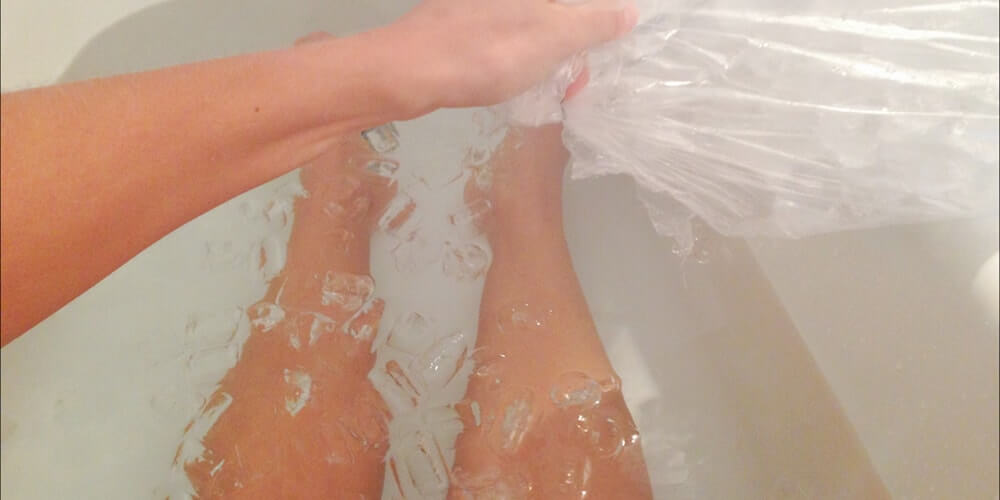
การใช้เครื่องทำความเย็นอ่างน้ำแข็งต้องให้ความสนใจกับความปลอดภัยเพื่อให้แน่ใจว่าได้รับประสบการณ์ที่ปลอดภัยและมีประสิทธิภาพ:
- ความปลอดภัยทางไฟฟ้า: ตรวจสอบให้แน่ใจว่าเครื่องทำความเย็นเชื่อมต่อกับเต้าเสียบที่ต่อสายดินอย่างเหมาะสมและส่วนประกอบไฟฟ้าทั้งหมดอยู่ในสภาพดีตามรหัสไฟฟ้าท้องถิ่นเพื่อป้องกันการกระแทกหรือไฟ
- การตรวจสอบอุณหภูมิ: ใช้เทอร์โมมิเตอร์ที่เชื่อถือได้เสมอเพื่อให้แน่ใจว่าน้ำจะอยู่ในขีด จำกัด ที่ปลอดภัยโดยทั่วไปโดยทั่วไป 50 ° F ถึง 59 ° F หลีกเลี่ยงอุณหภูมิต่ำกว่า 32 ° F เพื่อป้องกันอาการบวมเป็นน้ำเหลืองและสูงกว่า 60 ° F เพื่อรักษาประโยชน์การรักษา
- การเปิดรับค่อยๆ: โดยเฉพาะอย่างยิ่งสำหรับผู้เริ่มต้นเริ่มต้นด้วยระยะเวลาที่สั้นกว่า (2-3 นาที) และค่อยๆเพิ่มเวลาการสัมผัสเมื่อร่างกายของคุณปรับตัวให้เข้ากับความเสี่ยงของการกระแทกเย็นหรืออุณหภูมิโดยเฉพาะอย่างยิ่งที่สำคัญสำหรับผู้ใช้ครั้งแรก
- การดูแล: มีคนใกล้เคียงในช่วงสองสามครั้งแรกของคุณเพื่อความปลอดภัยโดยเฉพาะอย่างยิ่งหากใช้การตั้งค่า DIY และพิจารณามีระบบบัดดี้สำหรับสิ่งอำนวยความสะดวกเชิงพาณิชย์เพื่อตรวจสอบผู้ใช้โดยเฉพาะผู้ที่มีปัญหาสุขภาพ
- การดูแลหลังการกระโดด: อุ่นเครื่องค่อยๆหลังจากการกระโดดเพื่อป้องกันการกระแทก แห้งอย่างทั่วถึงและพิจารณาห้องอาบน้ำอุ่นหรือซาวน่าหลังจากนั้นเพื่อฟื้นฟูอุณหภูมิของร่างกายเพิ่มการฟื้นตัวและความสะดวกสบาย
บทสรุป
ชิลเลอร์น้ำแข็งในน้ำแข็งนั้นขาดไม่ได้สำหรับการรักษาอุณหภูมิน้ำที่ดีที่สุดสำหรับการพุ่งเย็นเพิ่มความสะดวกสบายความปลอดภัยและประสิทธิภาพ ไม่ว่าคุณจะเป็นผู้ใช้ที่บ้านที่กำลังมองหาผลประโยชน์การกู้คืนหรือสถานที่เชิงพาณิชย์ที่จัดเลี้ยงให้กับนักกีฬาเลือกเครื่องทำความเย็นที่เหมาะสม - พิจารณาความสามารถในการทำความเย็นประสิทธิภาพการใช้พลังงานและคุณสมบัติเช่นการกรอง - สามารถเปลี่ยนประสบการณ์การบำบัดด้วยน้ำเย็นของคุณ ด้วยตัวเลือกตั้งแต่หน่วยระบายความร้อนด้วยอากาศแบบพกพาไปจนถึงระบบการค้าที่แข็งแกร่งและความเป็นไปได้ของการตั้งค่า DIY มีวิธีแก้ปัญหาสำหรับทุกความต้องการเพื่อให้แน่ใจว่าคุณสามารถเพลิดเพลินกับพลังการบำบัดด้วยน้ำเย็นอย่างสม่ำเสมอและมีประสิทธิภาพ
อุณหภูมิที่เหมาะสมที่สุดสำหรับอ่างน้ำแข็งจะแตกต่างกันไปตามความชอบส่วนบุคคลและจุดประสงค์ โดยทั่วไป อุณหภูมิระหว่าง 50 ถึง 59 องศาฟาเรนไฮต์ (10-15 องศาเซลเซียส) ถือว่าเหมาะสมที่สุดสำหรับวัตถุประสงค์ในการพักฟื้น
ระยะเวลาในการแช่น้ำแข็งขึ้นอยู่กับประสบการณ์ ระดับความสบาย และผลลัพธ์ที่ต้องการ ผู้เชี่ยวชาญส่วนใหญ่แนะนำให้อยู่ในอ่างน้ำแข็งประมาณ 10-15 นาที สำหรับผู้เริ่มต้น แนะนำให้เริ่มด้วยระยะเวลาที่สั้นลงประมาณ 5 นาที และค่อยๆ เพิ่มเวลาเมื่อคุณคุ้นเคยกับความเย็นมากขึ้น
ความถี่ขึ้นอยู่กับความต้องการและเป้าหมายส่วนตัวของคุณ นักกีฬาและผู้ที่ชื่นชอบการออกกำลังกายหลายคนรวมการแช่อ่างน้ำแข็งไว้ในกิจวัตรการฟื้นฟูตามปกติ ซึ่งอาจหมายถึงการแช่อ่างน้ำแข็งหลายครั้งต่อสัปดาห์ อย่างไรก็ตาม สิ่งสำคัญคือต้องฟังร่างกายของคุณและหลีกเลี่ยงการหักโหม เนื่องจากการสัมผัสกับความเย็นมากเกินไปอาจนำไปสู่ความเสี่ยงต่อสุขภาพ

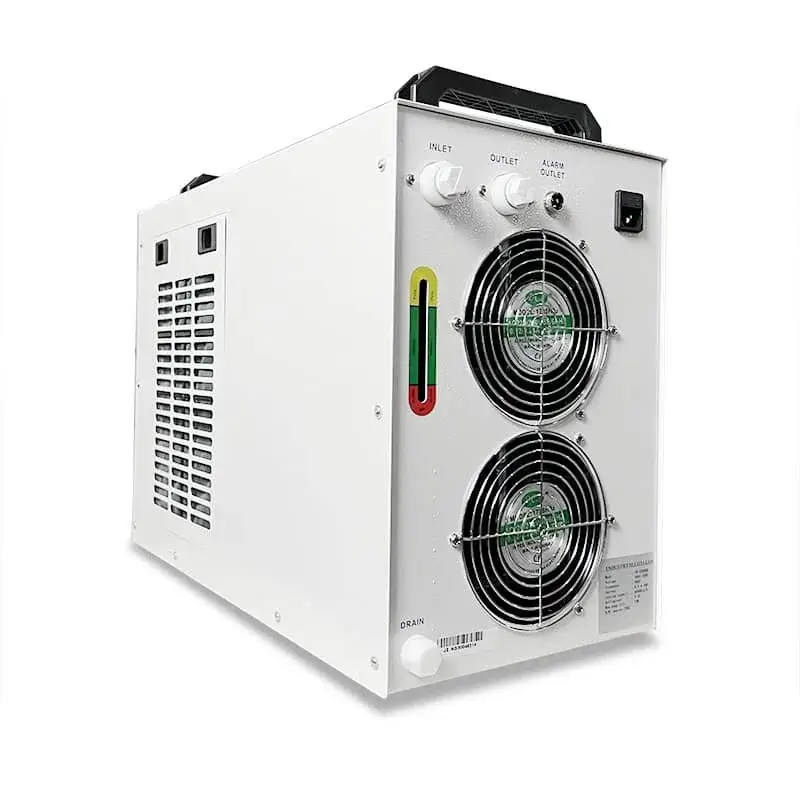
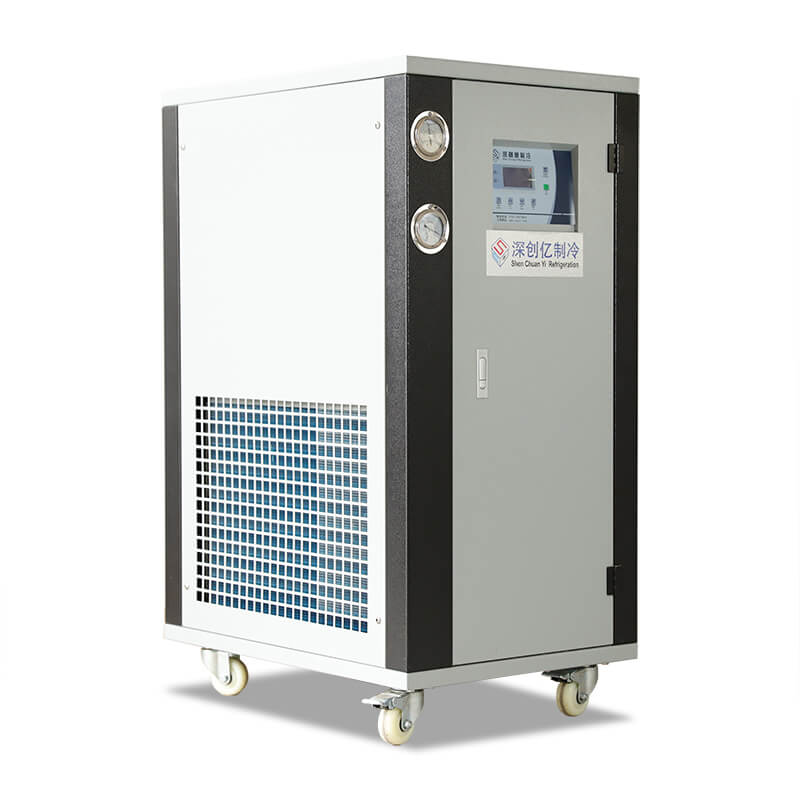
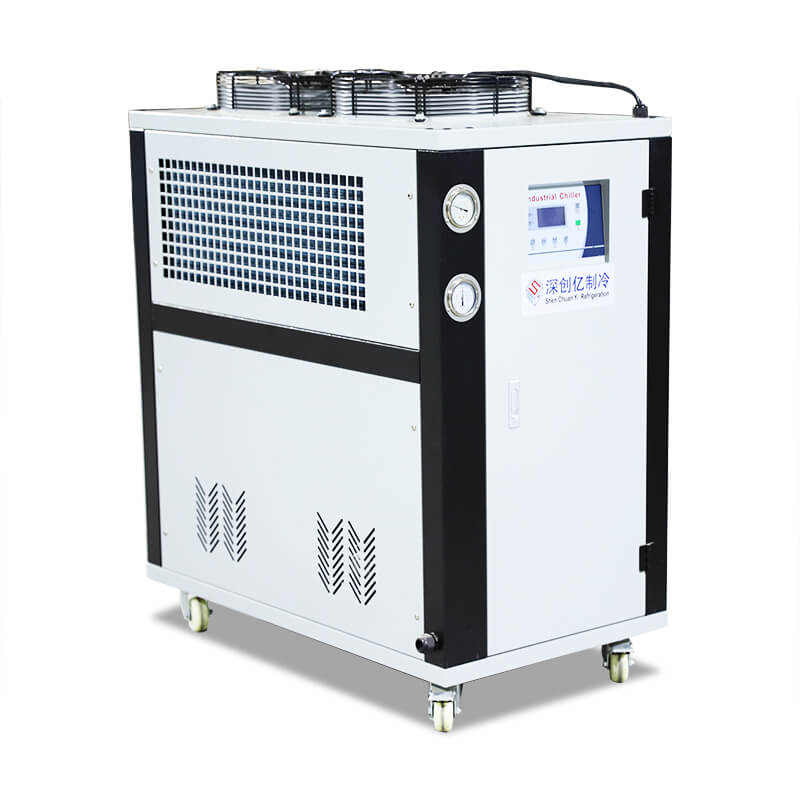
sy arianto.. 08128130808..ต้องการซื้อเครื่องทำน้ำเย็น..ขอบคุณครับ
ฝ่ายขายของเราจะติดต่อกลับหาคุณ ขอบคุณสำหรับคำถามของคุณ
ฉันต้องการเครื่องทำน้ำเย็น คุณสามารถรายงานให้ฉันได้
สวัสดี ฉันต้องการใบเสนอราคาสำหรับตู้แช่น้ำแข็งขนาด 3,000 ลิตรที่อุณหภูมิ 10 องศา
เมอร์ซี
ต้องการข้อมูลเครื่องทำน้ำเย็นแช่น้ำแข็ง
สวัสดีอันโตนิโอ
ขอบคุณสำหรับคำถามของคุณ.
ฝ่ายขายของเราจะติดต่อกลับโดยเร็วที่สุด
ขอแสดงความนับถืออย่างสูง,
สิงห์
ฉันสนใจมาก ฉันมีคำสั่งบอกคุณว่าฉันมาจากแอลจีเรีย
ฉันต้องการเครื่องทำความเย็นเพื่อทำให้ถังแช่น้ำแข็งขนาด 500 ลิตรเย็นลงถึง 4 องศาเซลเซียส